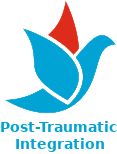Self-Assessment Scale for the Group Members
Group work is a valued working method. The most important is expperiental learning (learning from our experiences and from each other). Such methods are also intervision and supervision. Self assesment method allows members to acquire important information about one another, about their own perception of experiencing oneself and the group as a whole. On this basis interconnectivity and trust are built.
LessGroup work is a valued working method. The most important is expperiental learning (learning from our experiences and from each other). Such methods are also intervision and supervision. Self assesment method allows members to acquire important information about one another, about their own perception of experiencing oneself and the group as a whole. On this basis interconnectivity and trust are built.
Group work is a valued working method. The most important is expperiental learning (learning from our experiences and from each other). Such methods are also intervision and supervision. Self assesment method allows members to acquire important information about one another, about their own perception of experiencing oneself and the group as a whole. On this basis interconnectivity and trust are built.
- Module
- Self care
- Submodules
- Supervision
- Group size
- Small group
- Duration
- 60 - 90 min
Keywords
group work, intervision, supervision, experiental learning
Aims
The aim of this activity is that group members evaluate their behavior in the group, determine strengths and weaknesses and self-check feelings inside the group.
Participants
intervision or supervision group members (small group)
Description
The aim of this exercise is that group members evaluate their behavior in the group. They determine their strengths and weaknesses by rating themselves in this particular time (moment). After everyone has completed the inventory the group breaks into small groups (2-3 or similar), each one try to join those he/she knows the most. Members of the group should then assess one another self-ratings. Discussion about how one sees himself and how others perceive him/her, follows in a small group. Group sharing follows (each member of the group is invited to share the experience).
Process of self rating:
- Use the scale from 1-5:
- This is almost always true for me.
- This is frequently true for me.
- This is sometimes true for me.
- This is rarely true for me.
- This is never true for me.
- Evaluate the statements:
- I am able to trust others in the group.
- Others tend to trust me in a group situations.
- I am willing to openly express my feelings about and reactions to what is occurring within a group.
- I am able to give direct and honest feedback to others.
- I am open to accept feedback about my behavior from others.
- I avoid questioning others, instead I make direct statements to them.
- I listen attentively to what others are saying.
- I am generally an active participant as opposed to an observer.
We conclude the activity with a discussion and feedback from the participants.
Material
paper, pencil or pen
Method
experiental learning, evaluation
Advice for Facilitators
The trainers should stress that the participants be honest in their self-evaluation, because that is how they will get a realistic picture about how they feel in the group. It is very important that the group maintains a safe and trusting environment.
Source (APA)
Adapted from: Corey, M., Corey, G., Corey, C. (2010). Groups: process and practice. Brooks/Cole, 2010.
Contributor
Integra Institute (Sonja B. Eisenreich).
Announcements
- - There are no announcements -

